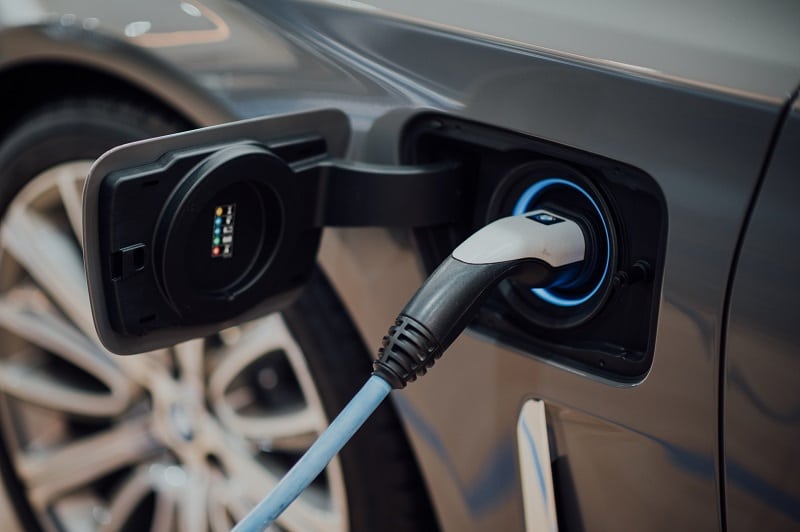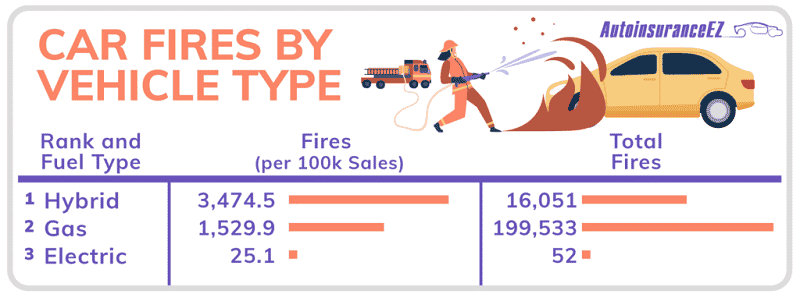
Electric and Hybrid Cars Are Getting Plenty of Buzz – Is It Really Organic Popular Interest, and Are EVs Feasible for Most Citizens?
In April of this year, Mountain Metropolitan Transit of Colorado Springs added four fully electric buses to its fleet. Debuted on Earth Day, they signal the Transit Service’s policy in their part of the infrastructure.
“That is something we’re very excited about, to try to transition our fleet from diesel to some zero-emission type of vehicle,” said Brian Vitulli, Transit Planning Supervisor.
Colorado House Bill 22-1218, a bill mandating a quota of EV charging stations in nearly all new construction in the state, had been volleyed back and forth between members since February. It was signed into law on Jun 7.
And for almost a year, the Colorado Energy Office has been funding a campaign essentially lobbying directly to citizens to buy electric cars.
The hype is there. The optimistic forecasts about the EV market are there. But is the EV – as is, in 2022 – a reality-based solution for most Colorado citizens?
If the EV Will Not Come to the Mountain: Ecology, Terrain and Driving in Colorado
Reducing or mitigating air, water or other pollution is a necessary part of the infrastructure. This includes climate concerns. Cars are part of the equation for every state. But climate, terrain, and weather in Colorado are unique. Colorado is one of the most mountainous states in the US. The climate and weather, it’s diverse. However, the cold and snow stand out.
Quick Climate Stats on Colorado:
- Fourth snowiest US state, with mountains getting over 150 inches per year
- Denver sees only about 57 inches per year
- The USDA plant hardiness map sampled temperatures from 1975 to 2005. It indicates that, annually, every county in Colorado has some days at, or below, 10 degrees. And those are the warmest counties.
- CO is still in the colder top 25% of states overall, sitting at number 12.
Remote work has advanced enormously in opportunities and in the sheer volume of employees over the last decade. It spiked during COVID. Nationally, however, it’s still not the majority and the numbers are shrinking as the COVID concerns do.
A Society for Human Resource Management survey found that 2017-2018 numbers–pre-COVID, had about one-eighth of professionals working from home. In April of this year, Fortune Magazine, citing WFH expert and Stanford economist Nick Bloom, said the number of people working from home is 25 to 35%. Fortune also cited the Bureau of Labor Statistics saying COVID-based remote working is going down. This means the daily commute is still very much a thing even in Colorado.
Colorado is big and topographically diverse. As well, it is a large mix of urban, suburban, and rural. A longer average commute might make sense. However, in terms of minutes versus miles, it’s about average for the US. For hour-plus commutes, it’s a little above average with about one in fourteen citizens having an hour-plus commute.
Colorado also has between 7.9 and 8.6% remote workers (the 2020 census has it over 10%), which is high for US states. However, the 2020 census has 2.13 million working residents driving alone to work in the state which is over one-third of all citizens total. Walking, biking, and public transport collectively tallied under 10%.
The commute may be an average distance. But weather and terrain have major effects on vehicle life and practicality.
What, then are the car needs for Colorado residents? They need dependable, rugged, weather-tough cars that can go the distance, even on hills. Can EVs do that?
EV Drawbacks in Cost and Convenience
EVs have noticeable drawbacks.
If simply plugging and unplugging EVs was enough, that would be much easier. But the broad adoption of EVs is much more than that.
“The time it takes to fully charge an EV by plugging it into a traditional household outlet isn’t measured in hours, but rather, days.” Though, some can charge from a simple wall socket in 8 to 12 hours. (HB-1218 creates more charging ports).
Some homeowners are willing to bear the costs of installing enhanced charging equipment. Large developers with publicly traded stocks can add green measures like this to new properties. More broadly, however, landlords and smaller property owners may not want to. They are likely cautious to bear the cost of increased electrical consumption besides installing charging ports. This does not address the major liability and insurance concerns with EVs for smaller property owners.
Level Two charging stations can be DIY’ed for $1,200 with sympathetic sources saying as low as $300. These can cut the standard socket charging time by half or better.
From there, the cost calculation adds the x-factor of lifestyle and individual needs. The convenience and spontaneity of more miles subtract from the range. Rating the number and dollar sign on this depends, again, on lifestyle and needs.
After this, the calculation becomes electricity costs at home versus paying at the gas pump. To do this, one option is an (advertorial) calculation device by EVAdept which can help you determine your cost for charging an EV. The calculations are very detailed. The owner will need the granular on their car or prospective car.
Without getting into specific models, the cold-hard-cash EV cost for year one depends on how long you can wait for a charge. To get a charge in 4 to 6 hours, the cost is a few hundred dollars minimum; for a charging port. That’s if you own your home or have the go-ahead from a landlord.
Gasoline vs. Outlet Prices
Sticker price? There are some EVs at, or below, $35,000. Most are above $40,000. But that is only part of the calculus. And 40,000 is still slightly above average cost. What about gas?
Save Money, Buy Electric:
- 12,899 miles is the average number of miles driven annually by a Colorado citizen
- National gas price 2019: $2.70
- National gas price May 2022: $4.10
- If your car gets 29 mpg on average: 12,899 divided by 29 = 444.79 gal
- $2.70 per gallon (2019 price) = $1200.94
- $4.10 per gallon (mid-price for regular gas May 2022) = $1823.64
- Extrapolated, a Colorado citizen is paying around $600 more per year for gas than in 2019

Burning Winter Fuel
Are they dependable? Like gas-powered cars, perfect maintenance, perfect driving habits and perfectly scheduling your trips will mean a generally reliable car – in perfect weather. But cold weather, like the kind in Colorado, is a big drain on EV performance.
Electric Cars and the Cold:
- In a very real-life test that simulated running three errands on a cold day (0 to 10 degrees F in Connecticut), Consumer Reports found Tesla’s Model 3 and Nissan Leaf each lost over 40% of their range.
- A 66-page AAA report on studies at the Automotive Research Center lab in LA saw only a 10% loss for the Chevy Bolt, Nissan Leaf and Tesla Model S at 20 degrees F – but with the heat off and that includes the windshield defroster.
- Electric vehicle enthusiasts admit that winter weather clobbers an EV’s range. “There’s no getting around it: electric cars in winter have a shorter range. On really cold days, the loss can be up to 40 percent, especially when running the heater,” wrote John Voelcker, Green Car Reports.
A Note on Safety
EV fires are different than typical car fires. They’re incredibly hard to put out. Anecdotally, some Colorado Springs property owners have outright banned EVs from being parked in garages or enclosures because of this hazard.
The recent Tesla crash that killed two people in Texas took (at least) 28,000 gallons of water and four hours to put out. With the new federal program launched that 28,000 gallons and four hours might not be an outlier.
AutoinsuranceEZ rated EV fires against gas-powered and hybrid fires. The problem is that the sample size for gas-powered cars, when the math is interpolated, was 26 million. Using the same calculus (and looking at the Bureau of Transportation Statistics–cell V5), the sample size for full electric renders as 240,053 vehicles. It’s an apple(s)-to-apple comparison.

To get a more accurate per-100,00-style comparison: 26 million EVs would be 108 times the 240,000 cited. And 108 times 25.1 EV fires are 2,710 EV fires, stacked apples-to-apples against 1,529 gas-powered car fires.
The conclusion from a closer look at these specific data is essentially EVs are more prone to fires than gasoline cars.
Short Circuit: Disconnect Between EV Enthusiasts and Most Consumers
As of Apr 1, Colorado has 51,645 EVs. With total state vehicle registrations near 2 million for the state, that’s approaching 3%. Keep in mind, though, that even in 2016, 17,155 EVs in Colorado were publicly owned: many were bought by the government. That’s about one-third of all EVs. As an artificial indication of widespread popularity, that shows a problem.
EVs can curb carbon pollution output. The level of cost, the level of planning, the level of extensive, highly detailed legislation, and public lobbying involved are not matching the public’s interest. Even the Colorado Sun noted as much. “These things won’t sell themselves, according to a new series of public-private partnerships that say retiring gas vehicles to stop climate change can’t be left to the free market.”
Conservation is impossible without trade-offs. Apocalyptic climate predictions and changes in temperature have long been leveraged as ways to end the debate over trade-offs. That strategy’s effectiveness has been mixed. Looking closely at EVs, at Colorado drivers’ needs, the state’s weather, and the real-world money calculus, electric cars are a hard sell. Most citizens are, with reason, not springing for an electric vehicle even with a slightly better local infrastructure to support it.
Interested in learning more about Zero-Emission Vehicles, check out ‘The Green Dream: Zero-Emission Vehicles Big Lie‘.










“EVs can curb carbon pollution output.”
Can they? Cobalt, lithium, etc. take a lot more energy to extract and refine than iron. The same goes for recycling them. The total lifecycle for an EV is about as carbon producing as an ICE vehicle. They are also more hazardous to use. And, finally, we are more dependent on countries such as China for the materials to build them.
“ To get a more accurate per-100,00-style comparison: 26 million EVs would be 108 times the 240,000 cited. And 108 times 25.1 EV fires are 2,710 EV fires, stacked apples-to-apples against 1,529 gas-powered car fires.”
Your math is wrong. You can’t multiply fires/100,000 to get a new fires/100,000. Perhaps you meant to calculate a new total number of fires? At any rate, the source indicates a *much* lower chance of a fire in an EV than in a gasoline powered vehicle.
You’re absolutely correct, the author has no idea what they are talking about in relation to EV car fires. If the author was a real journalist and not a paid advertiser for legacy autos, they would print a retraction or correction. This article is over a year old and neither has occurred. The author has moved on to their next paid journalism article, may extolling the virtues of using tobacco!
Something to consider when deciding EV or Gas! Will our current electric grid support an additional 1 Million EV’s here in Colorado? The battery in an EV does not last all that long. Even Tesla won’t warranty their batteries for more than 8 years. The cost of replacement is (for Tesla battery pack) is between 35K and 40K. Yes there are other batteries for less, down side- they last half as long go 2/3 as far on a single charge and they are even more prone to fires. Now one last thing, these EV’s are being touted as “GREEN” but are they really. Consider what it takes to make the battery packs, (I talking the actual materials) How they must be processed to create the battery(s) and what do we do with those old batteries when they are no longer usable? You can recycle the old batteries, however currently the cost of recycling is greater than the mining costs for those recycled materials. And lastly the materials that are toxic (more so than gas or oil spills) cannot be recycled and must be dealt with in, as yet some unknown manner) CONCLUSION: EV’s are not economically, materially, ecologically, and consumer ready!
[…] frequently invokes “kitchen table issues.” The price of gasoline in a car-loving nation and a car-dependent state is one such […]
[…] but the cost is still shocking. And the many drawbacks of EVs, particularly to Colorado travel, covered earlier in The Maverick Observer, are no doubt similar for the […]
Your article is full of falsehoods, your math is wrong and most of your conclusions about EVs are wrong.
1) EVs are 10x-100x less prone to fire than gas cars. You made an elementary-school mistake of taking a sample per 100K sales (which accounts for the number of cars in the sample) and multiplying it by another number (total sales) in order to make a comparison. The number of vehicle fires PER 100K cars sold, and fires PER millions of miles driven are all conclusive: EVs are orders of magnitude safer from fire than any gas car. The number of fires *PER* something accounts for the sample size, and is a percentage. Percentages using a minimum statistical sample size do not change with a larger sample size! NHTSA generates the fires per million-miles-driven statistics, by the way, and the conclusion is clear: liquid explosive cars catch fire, EVs do not.
2) The time required to put out an EV fire is meaningless when the vehicle itself is 10x-100x less likely to catch fire. Which would you rather fly in: airplane brand A that crashes 10x more than airplane brand B, but brand A’s fire is easier to put out?
3) Electric cars in Colorado aren’t a “hard sell”; did the Colorado Automobile Dealers Association tell you to say that? Two Tesla car models (the 3 and the Y) are the best selling cars on the planet, despite the pitiful cries of traditional auto makers.
4) Cold weather range loss in an EV is temporary, and new EVs with heat pumps are relatively unaffected by cold weather. With EVs now averaging 300+ miles of range, cold weather losses are not a factor for most owners. I’ve owned my EV in Colorado for 9 years, the winter range loss is not a problem. The 40% range loss quoted is out-of-date, as newer vehicles are not impacted as much. Furthermore, the question is so what? On the “three errand” test that was mentioned, did the driver make it to their destinations? Answer: yes! Who cares if their kilowatts-per-mile is greater at 20F? Even if you had a 50% range loss on a 300-mile car, you have 150 miles to do with as you please.
5) EV charging stations for the home owner are as cheap as using an existing clothes dryer circuit or a regular outlet. Almost all EVs come with a portable charger, and you can easily charge an EV for the average person’s use with 120v house current. I recommend any new EV owner to install a universal 220v outlet if they want that much amperage, and NOT install a dedicated charger.
6) EVs DO “sell themselves”. The average Tesla owner propagates the sale of 3 other Teslas by just taking friends and relatives for a ride. Tesla spends ZERO dollars on advertising for that reason.
7) The statement that it takes DAYS to charge an EV on house current is misleading, but it was intended to be. The average person drives about 30 miles per day in the USA, and you can easily put back more than 30 miles of range overnight using house current. One Tesla Model 3 owner I know puts back 77 miles of range overnight on house current! What the misleading statement fails to mention is that few people, if any, drive a car from full to empty every day. You can completely recharge ANY EV overnight using a clothes dryer circuit.
In conclusion, it’s clear that the author didn’t speak with any EV owners, they just wrote what their advertisers told them to. I expected better journalism for your organization, but I guess I was too hopeful in this day of for-pay news services.